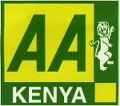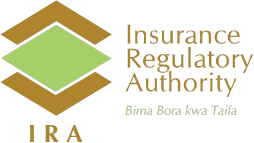Car Insurance in Kenya: What Is No Blame No Excess?
Posted on 2018-03-12
This is one of the most common questions asked by car owners in Kenya before buying a comprehensive car insurance cover in Kenya.
It is a policy clause included in most motor insurance covers that states that is to blame for the accident and their responsibility.
If a motor insurance company has a "no blame no excess" policy, then the insured will be exempted from paying excess if they are not to blame for an accident where there is damage to the insured asset. This policy ensures that a policyholder is not to be blamed for something that was beyond their control. It is for this reason that a police abstract is always required from the scene of accident capturing which of the parties is to blame for the accident.
In very rare cases, the insured may need to pay the excess initially, but if it can be proven that the accident was the fault of the third party and they accept blame, then the insurance company claims it back from the insurers of the driver who was at fault.
Also, if there’s a dispute about who is at fault, the insured may have to pay excess initially until a decision is made. This may involve taking them to court if they refuse to give you the money.
In case of a claim
When the insured is involved in a road accident and the third party that is other driver/vehicle is to blame for the accident and this is captured and acknowledged in the police abstract. Here, the insurance company of insured/ will cover all the damages from the accident and the client does not have to pay any excess amounts. The insurance company of the insured then claims back the damages from the insurance company of the third party who was the cause/responsible for the accident. For the insured not to pay any excesses from the repair costs, most car owners take what is called an excess protector in Kenya.
However, there are some cases when the insured is still expected to meet the costs of the damages irrespective of the no blame no excess clause. If the damage is below the excess amount for the insured's car insurance policy, the insured is still expected to meet all the costs of the repairs.
The principle of No Blame No Excess is derived from the insurance principle of subrogation.
Principle of Subrogation
It is a term for a legal right of most insurance companies under which an insured party surrenders its rights against a third party to the insurer after claiming and receiving compensation for an insured loss. It states that if a third party damages the insured's property, the insured has to transfer their right to sue the third party to their insurance company before the insured can receive payment for their insurance claim. By accepting the payment, the insured agrees to transfer over their right to sue.
It helps insurance companies to manage losses after paying a claim. Any time they pay out a claim, the insurance company tries to recuperate the money in court by suing the person who caused damages to the insured. However, the insurance company doesn’t have the right to sue until the insured transfers that right over. Therefore, insurance companies include the subrogation principle as part of their terms for paying an insurance claim. The insured automatically transfers over their right to sue so the insurance company can move forward immediately with the legal proceedings. In the example given above on car insurance quotes in Kenya, the no blame no excess is clearly derived from this insurance principle. This is more common in motor insurance policies but may not be applied in other forms of general insurance like laptop and smartphone insurance in Kenya.
Policy Holder Compensation Fund (PHCF)
This fund was set by Kenyan government as a State Corporation under the Ministry for Finance to work hand in hand with the insurance industry. It is charged at 0.25% of the calculated insurance premium before the inclusion of the training levy and the stamp duty to the insurance premium. The fund has two main objectives:
- Provide compensation to policyholders of an insurer that has been declared insolvent and if that happens, they can apply for compensation from the Fund.
- Increase the general public’s confidence in the insurance sector.
- Assists in monitoring the risk profiles of insurance companies amongst other duties.

































